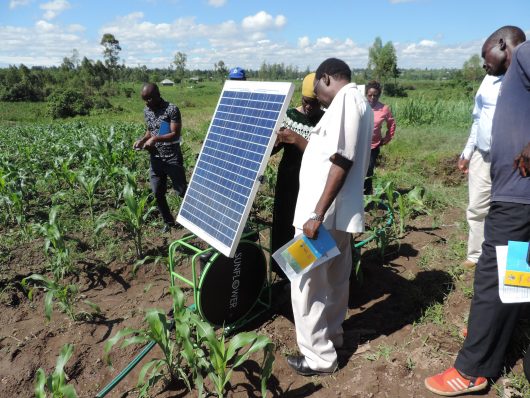US and Denmark Team Up to Fund African Renewable Energy Projects

The African Renewable Energy Fund (AREF) was created in March 2014. The US and Denmark committed $100 million dollars to the fund, which was created to diversify Africa’s energy portfolio through funding and providing technical support for renewable energy projects.
The fund invests in hydro, wind, geothermal, solar, biomass and waste gas projects that connect to the greater African energy grid or local energy grids. Berkeley Energy manages AREF and has successfully doubled the initial investment, reaching an operational budget of $200 million. This was made possible through multi-lateral partnerships and investments from the African Development Bank (AfDB), African Biofuel and Renewable Energy Company (ABREC), Nederlandse Financierings-Maatschappij voor Ontwikkelingslanden N.V. (FMO), the Calvert Foundation and many others.
In the past few years, the Sustainable Energy Fund for Africa, (SEFA) has committed one million dollars to Green Mini-Grids in Gambia, one million dollars to a community-owned hydropower project in Kenya and $870,000 to Tanzania’s Renewable Energy Investment Facility. In addition, they funded the first-ever Biomass Gasification Project in Uganda.
Access to energy is arguably the only true equalizing catalyst for development. According to the Food and Agriculture Organization of the United Nations (FAO), there is a direct correlation between the amount of energy used per capita and the average life expectancy in a country. As energy consumption increases, life expectancy rates increase in turn.
There is currently a race to implement clean energy in Africa among development contractors and development banks. This is in order to raise the quality of life without adding greenhouse gases into the atmosphere. Every year, 5.5 million people die prematurely from air pollution-related illnesses. If Africa diversifies its energy portfolio at this early stage of energy infrastructure development by installing renewable energy technologies instead of traditional coal-fired power plants, it could save millions of lives on the continent from pollution-related deaths, and continue to benefit economically from its carbon credit cap and trade practices.
– Josh Ward
Photo: Flickr
